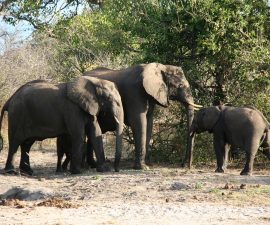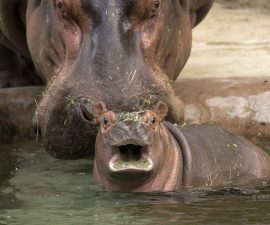BY Karyl Carmignani
Photography by Ken Bohn
They can grow as long as a pencil and as thick as your finger, but they don’t bite or sting. They wave their antennae excitedly when disturbed. They can elicit gasps of terror or squeals of delight from people who see them. They employ one of the most unusual reproductive strategies in the Animal Kingdom, and they inhabit a tiny, jagged chunk of rock poking out of the Tasman Sea. Their history is shrouded in secrecy, their modern-day existence steeped in uncommon tenacity. Of the 3,000 species of stick insect, the Lord Howe Island variety Dryococelus australis is the rarest on Earth—and one of the most intriguing. “Most people don’t feel the same type of empathy for a big, black insect as, say, a giant panda,” said Paige Howorth, curator of entomology at the San Diego Zoo. “But these stick insects are just as important.” Indeed, the improbable history and cloak of mystery surrounding this species make saving it all the more compelling.

Sticks and Stones
If you are one of the approximately 350 permanent residents of Lord Howe Island (pictured above), part of an archipelago of 28 volcanic islands located 375 miles from mainland Australia, chances are you are fiercely proud of your idyllic, 22-square-mile homeland. From the “champagne surf” at Blinky Beach to astonishing vistas from atop Mount Gower, to snorkeling the underwater fantasy land of Erscott’s Hole, this cluster of islands is one of most pristine and biologically diverse places on the planet. In 1982, the Lord Howe Island Group was listed as a UNESCO World Heritage site in recognition of its beauty and biodiversity. In its paradise-like setting, cell phone service is unavailable!

FOREST FOR THE TREES
An inviting walking track through a forest of curly palms Howea belmoreana, on Lord Howe Island, Australia.
It’s no wonder the Lord Howe Island stick insects (LHISI)—also known as tree lobsters—made a successful living in the lush forests. They were once so plentiful that fishermen used them as bait. But in 1918, the SS Makambo ran aground, and during the nine days it languished in the shallows of Ned’s Beach, rats escaped onto the island. The flightless stick insects, also called phasmids, that huddled together in tree hollows during the day and foraged at night were easy pickings for the rapacious rodents. (Five land bird species also vanished within two years of the rats coming ashore; and the lucrative Lord Howe kentia palm was under threat as the rats devoured the seeds.) In an effort to get rid of the rats, several species of owls were brought to the island. Apparently, the nocturnal masked owl and boobook owl found the phasmids more appetizing than the rats, and they did their part to extinguish the big, black bugs. The LHISI numbers tumbled in the 1920s; they were presumed extinct by 1930.
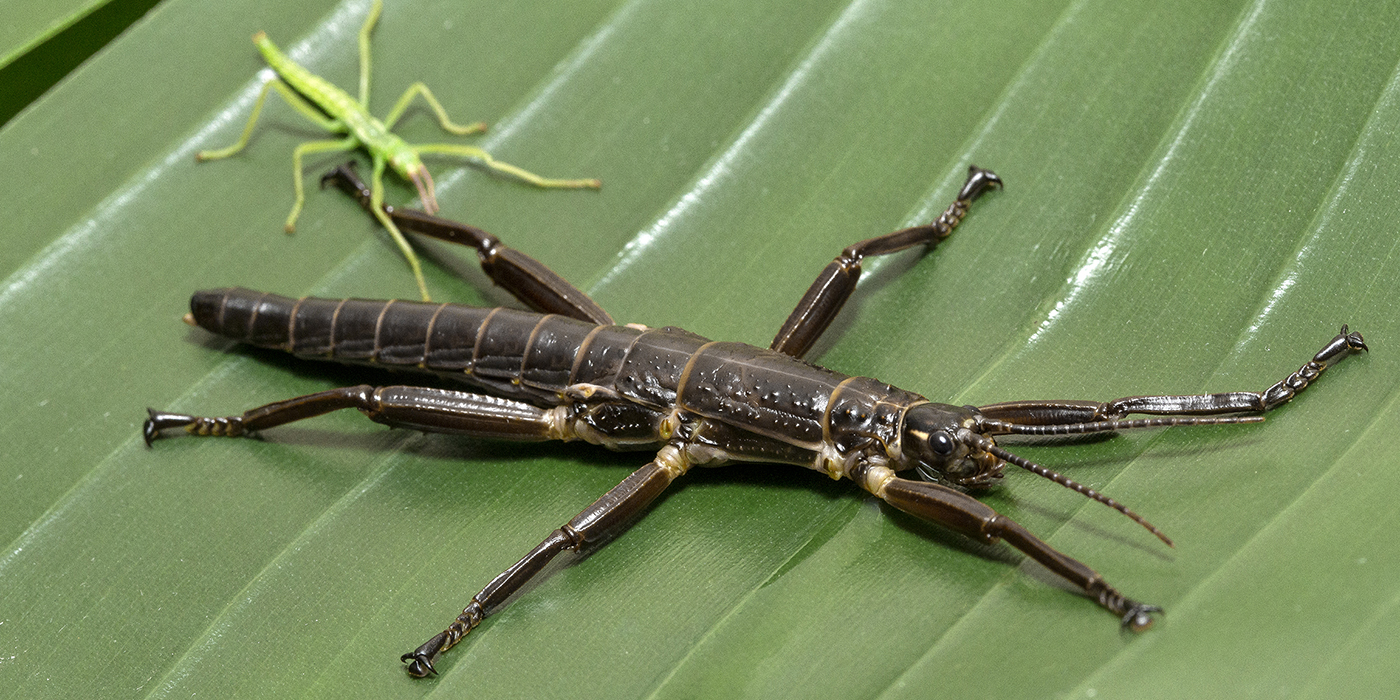
Fact or Phantom?
But there were whispers that perhaps the intrepid insect had somehow found its way to Ball’s Pyramid, a steep and unforgiving volcanic plug jutting out of the sea some 12 miles from Lord Howe Island. In 1964, climbers discovered a dead LHISI on the tiny island. More sightings of deceased animals followed, but attempts to find live specimens were unsuccessful. Then in 2001, a team of rock-climbing entomologists and conservationists landed on Ball’s Pyramid to document its flora and fauna, and determine if the LHISI was myth or reality. On a treacherous nighttime hike 330 feet above the roiling sea, they discovered a tiny population of LHISI living under a single, scrubby Melaleuca howeana shrub. It was a huge discovery! In 2003, two pairs of the insects were collected: one pair went to a trusted private breeder and the other to Melbourne Zoo in Australia. It was a tense, high-drama time, with a learning curve as steep as the island from which they came, since little was known about LHISI husbandry. But patience, persistence, and collaboration paid off, and eventually the founder stick insects built an empire. “In 2016, the Melbourne Zoo celebrated its 12th generation and 13,000th hatchling of the program,” said Paige. “At any given time, the Melbourne population hovers around 600 animals.”
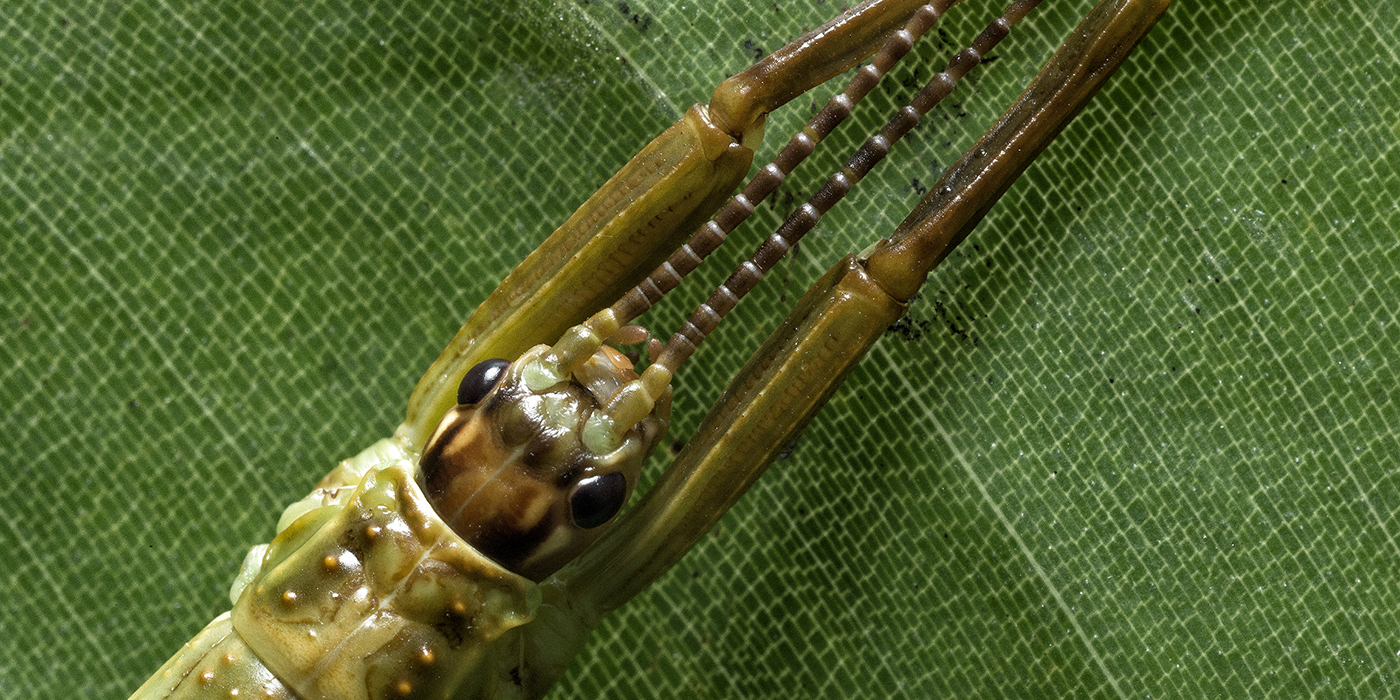
Stick-to-itiveness
Assurance populations are vital to species as rare as this. The San Diego Zoo, Bristol Zoo in the United Kingdom, and the Toronto Zoo in Canada stepped up, providing resources and expertise to help this phasmid recover. “Insect conservation is not as ‘sexy’ as saving furry mammals,” said Paige, “but insects are critically important to the global food web, and they perform irreplaceable ecological services in almost every habitat on the planet. Often, these jobs are done so efficiently that people don’t even have to think about it, and thus remain in the dark about the significant contributions. Insects and other invertebrates are our silent partners in maintaining life as we know it.” There’s no denying Paige’s passion and deep respect for her charges.
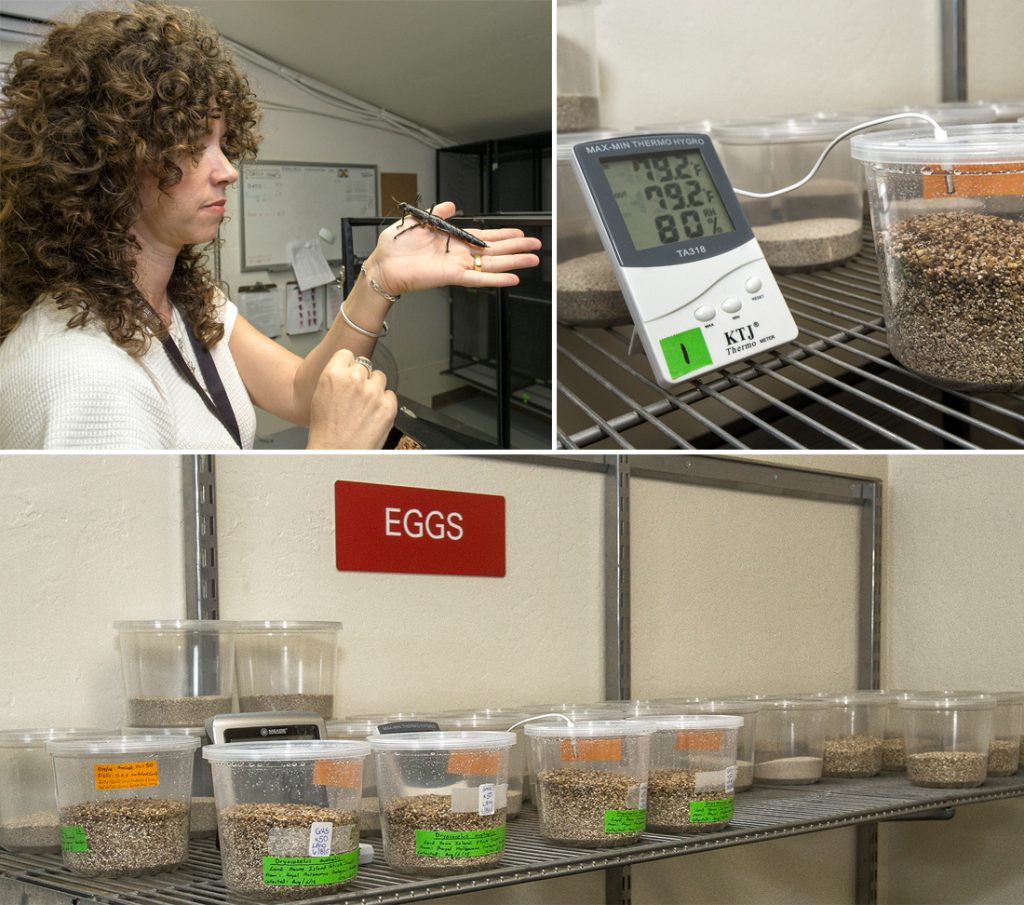
NYMPH NURSERY AT THE ZOO
From top left: Paige holding an adult Lord Howe Island stick insect; the insect eggs are closely monitored and must be kept at just the right temperature and humidity; each egg’s outcome is documented.
In January 2016, she traveled to Australia to escort 300 LHISI eggs to the San Diego Zoo. Of course, there was much preparation, including special permits, securing a private “nursery” area at the Zoo that could be temperature- and humidity-controlled, as well as growing food for the insects. Because the two most successful host plants used in the Melbourne program aren’t found in the US, in 2013 the Zoo sent horticulturist Seth Menser on a mission Down Under to collect seeds and cuttings from both plant species. “Our horticulture team has been instrumental in cultivating the host plants that this animal needs to thrive,” said Paige. Like many insects, the LHISI have a very high attrition rate, so it was a stunning success when 137 eggs hatched and 72 of those survived into nymph-hood.
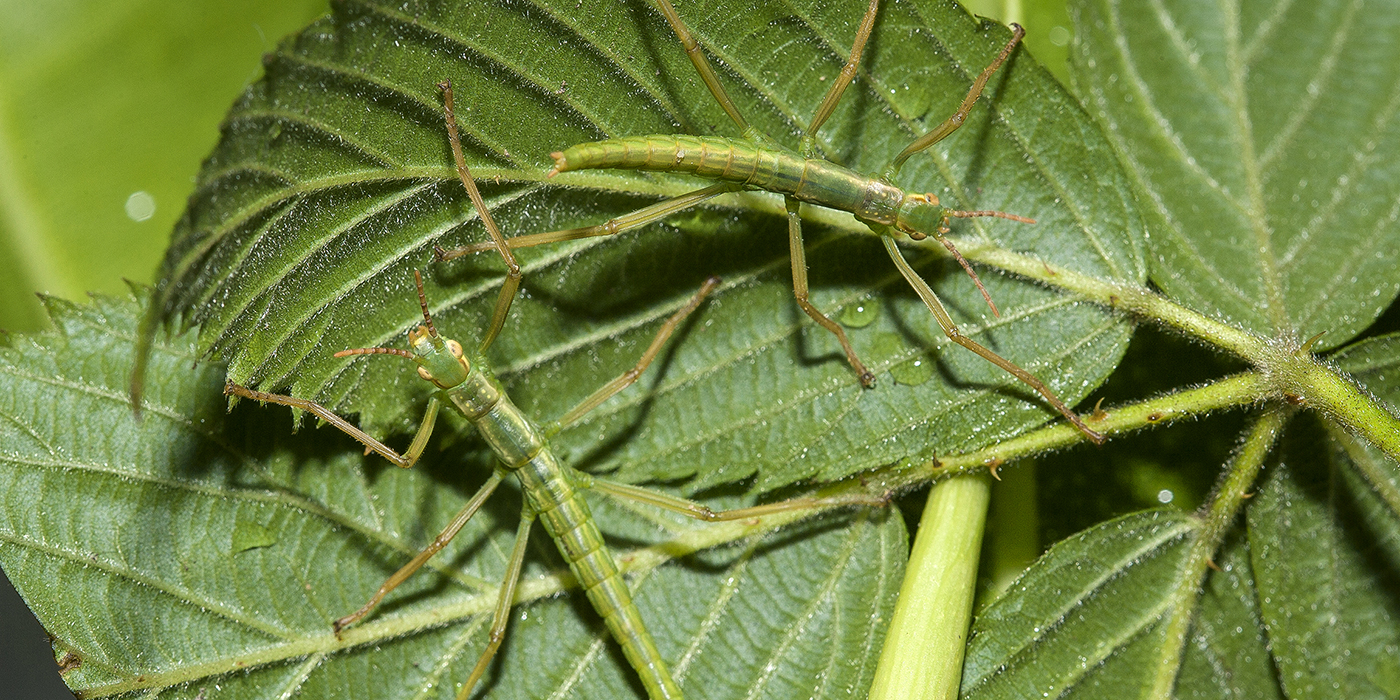
Celebrity Insects
Presently, the nymph nursery is in an off-exhibit area in a small, secure building retrofitted to meet the tropical requirements of the youngsters. “The nymphs prefer very humid conditions—up to 90 percent,” explained Isabel Rico, senior keeper, who tends to the insects daily. While they are “built for survival, they still have very specific needs.” The stick insects are divided into six separate cages, each with different types of fresh stalks of browse in water, and hollow logs to rest in and climb on. Isabel explained their colorful development from hatching to adulthood, which can take 6 to 8 molts over a 12- to 18-month life span. “The nymphs are neon green for the first few months of life and hide well in the plants. Once they turn black in adulthood, they seek darkness and become nocturnal foragers.”
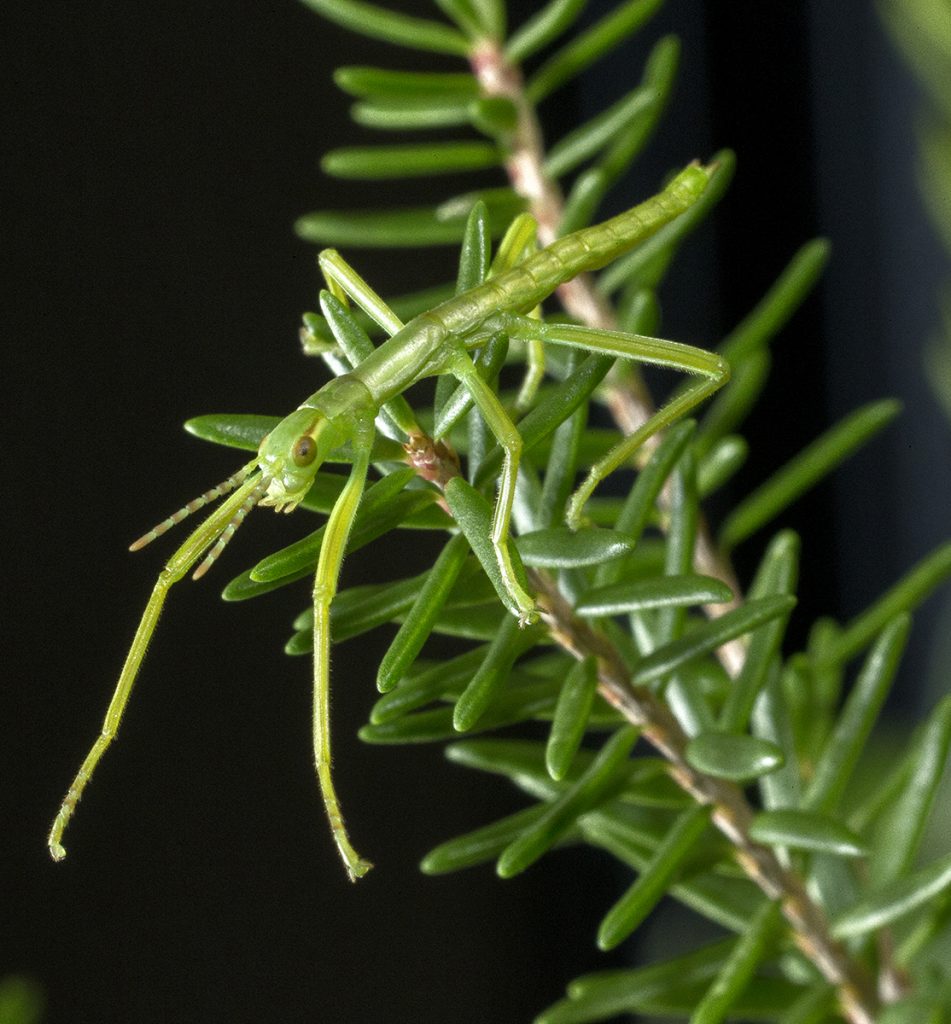
MASTERS OF DISGUISE
LHISI nymphs are diurnal and a vibrant green, which allows them camouflage while browsing.
Like many other phasmids, LHISI do not need a mate in order to produce fertile eggs. Unfertilized eggs become female offspring, while fertilized eggs can produce males or females. This form of reproduction is called parthenogenesis. Sexing the nymphs is relatively easy, as females have a conspicuous ovipositor, while males grow large femoral spines on their rear legs. Many stick insect females release eggs while suspended above the ground, and they land safely in the leaf litter and frass (insect poop). However, it appears that LHISI prefer to bury eggs in the soil or sand, using their ovipositors as digging tools. The half-inch-long eggs are beige in color with a raised, reticulated pattern; each one has a little cap called an operculum that looks a bit like a pull tab. At hatching, the chartreuse nymph clambers out of the egg where it has been folded up “like a little origami work of art,” said Paige.
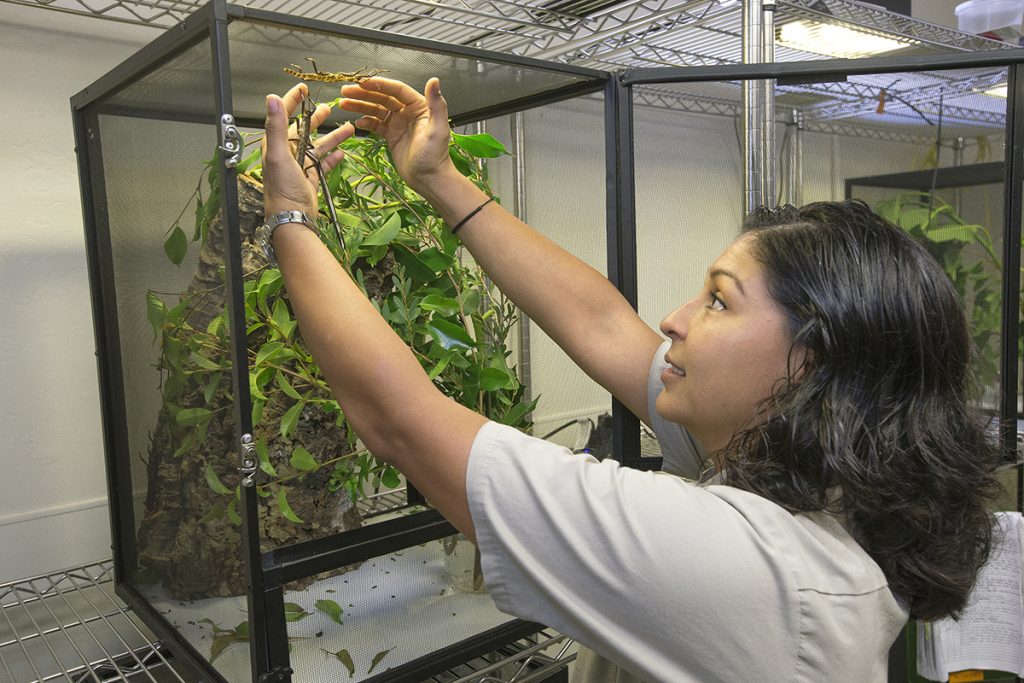
HANDLE WITH CARE
Isabel enjoys working with her charges, taking meticulous care to ensure they are thriving.
At the nymph nursery, Isabel explained the process of molting. It includes the animal generating a new exoskeleton hours before, then clinging upside-down to the mesh and “expanding like the Incredible Hulk.” To do this, it enlarges its body and creates enough force to split open the old exoskeleton along the thorax. It then uses gravity to gently ease out of the old “skin,” pulling free all the way down to the tarsal claws (aka toes) and tips of the antennae. It must then wait for the new exoskeleton to harden, which can take more than an hour. “The nymph leaves everything behind at molt,” Isabel added. Occasionally she has to assist with a molt if it gets stuck. “We use a bit of glycerin on a paintbrush to gently help separate the old from the new.”
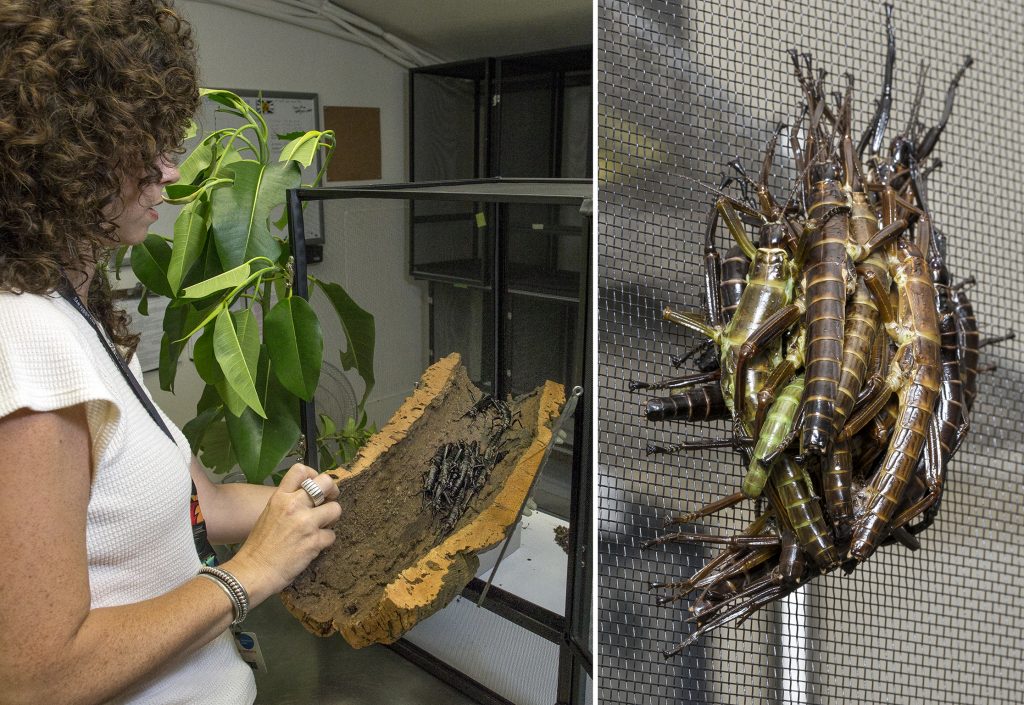
LIVING LARGE
Left: Paige checks out the insects “bonding” inside a log. Right: Leaving nymph-hood behind, these stick insects find safety in numbers. “Teenagers,” sporting lingering green, are hanging out in a cluster with the darker adults.
The older, darker insects were holed up inside a log, waiting for darkness. Paige gently removed one, and they peered at each other intently. “Insect conservation matters more than people realize,” she said. “Bringing the Lord Howe Island stick insect into the spotlight, with its great comeback story and wild charisma, will help rally more support for threatened invertebrates.” Whatever it takes to give them a leg up!


